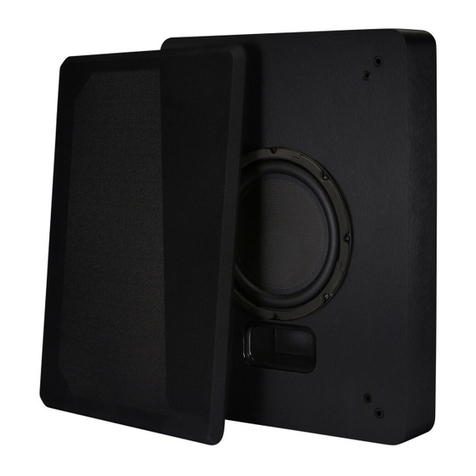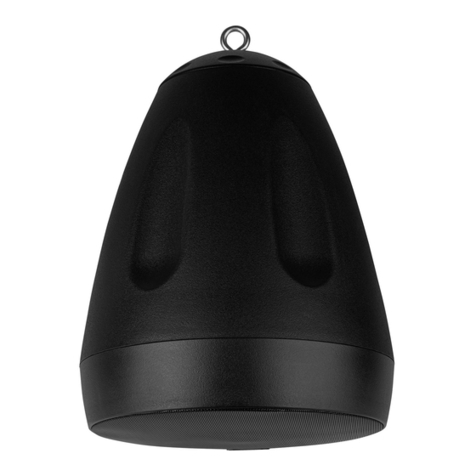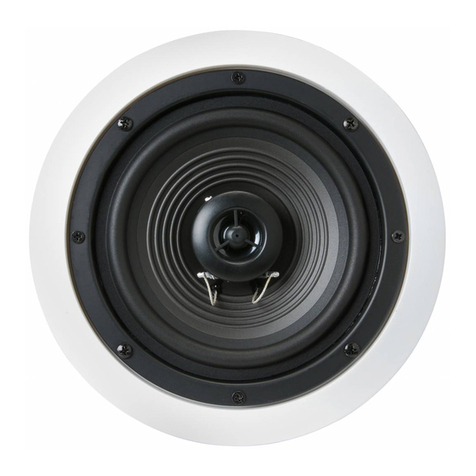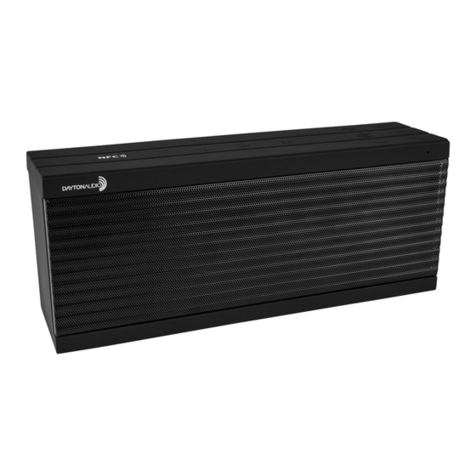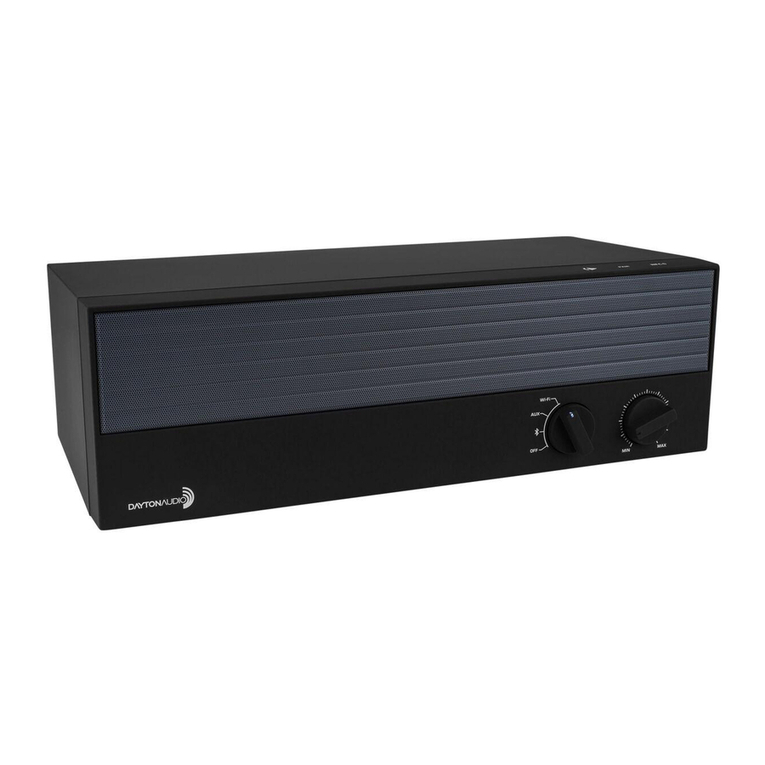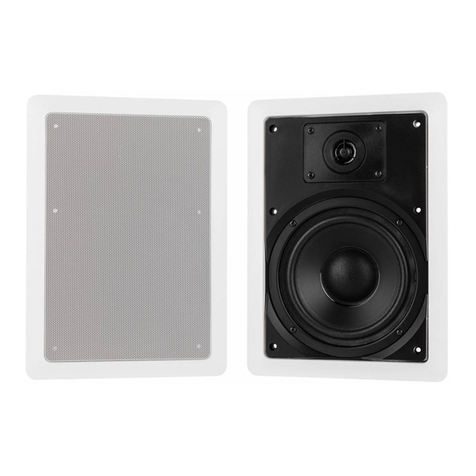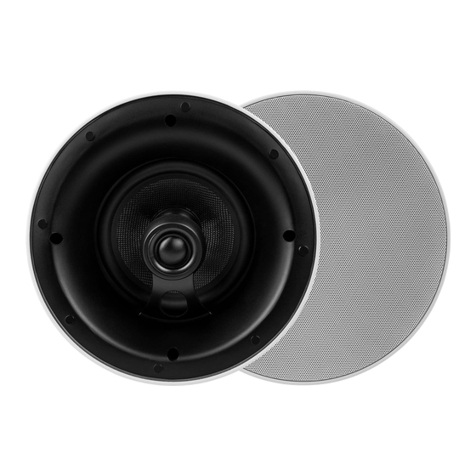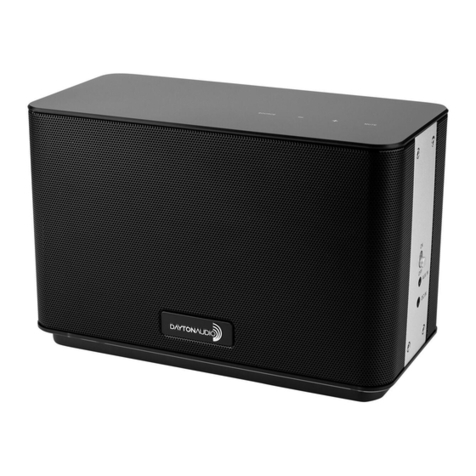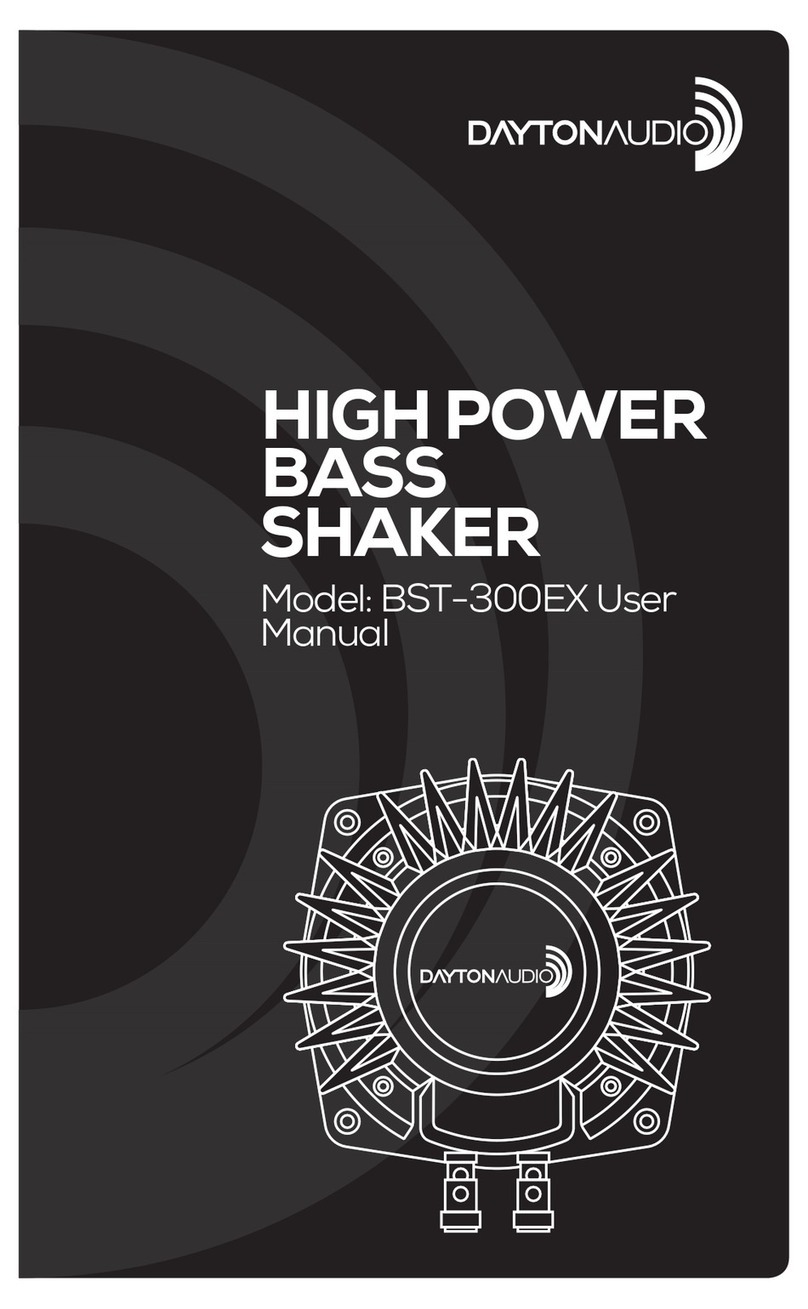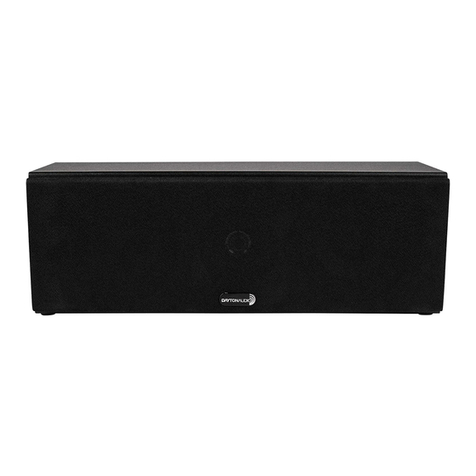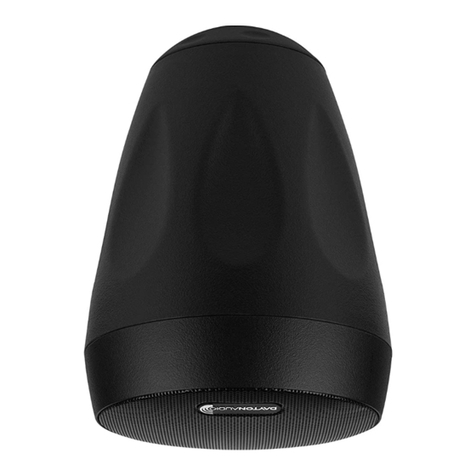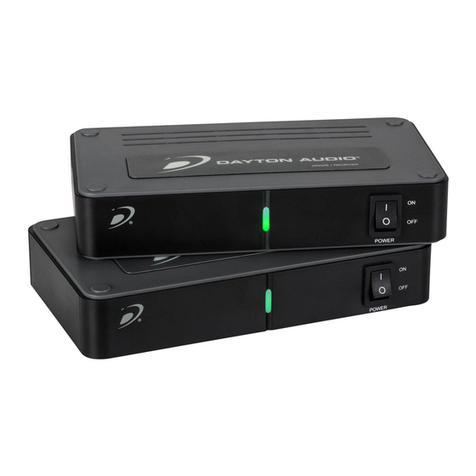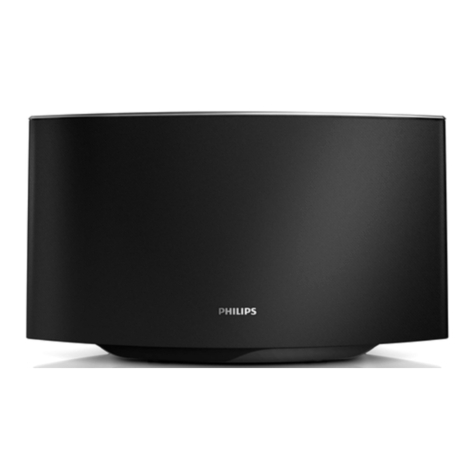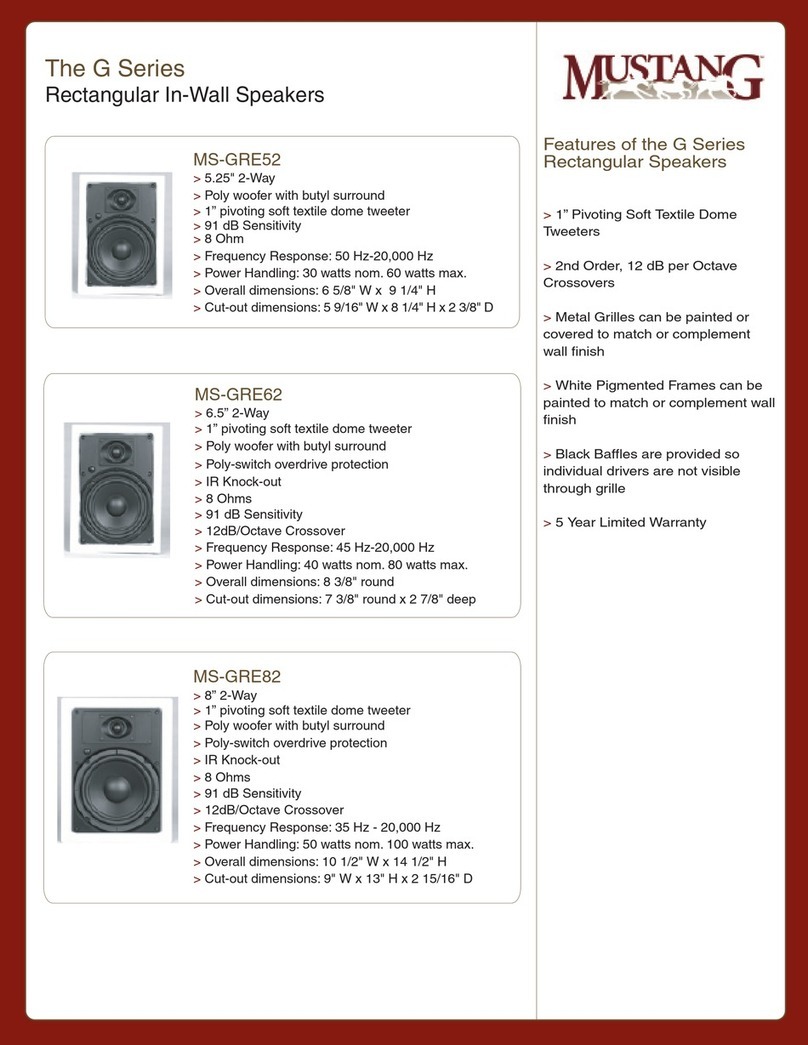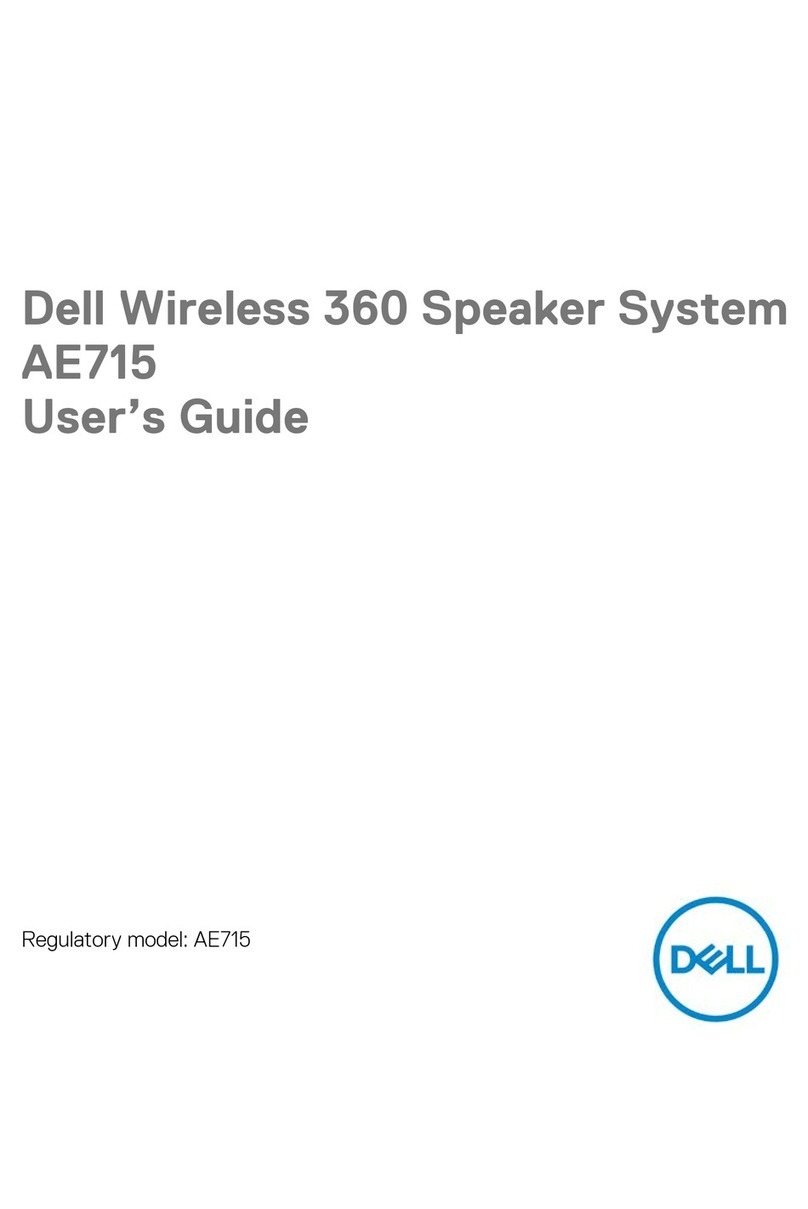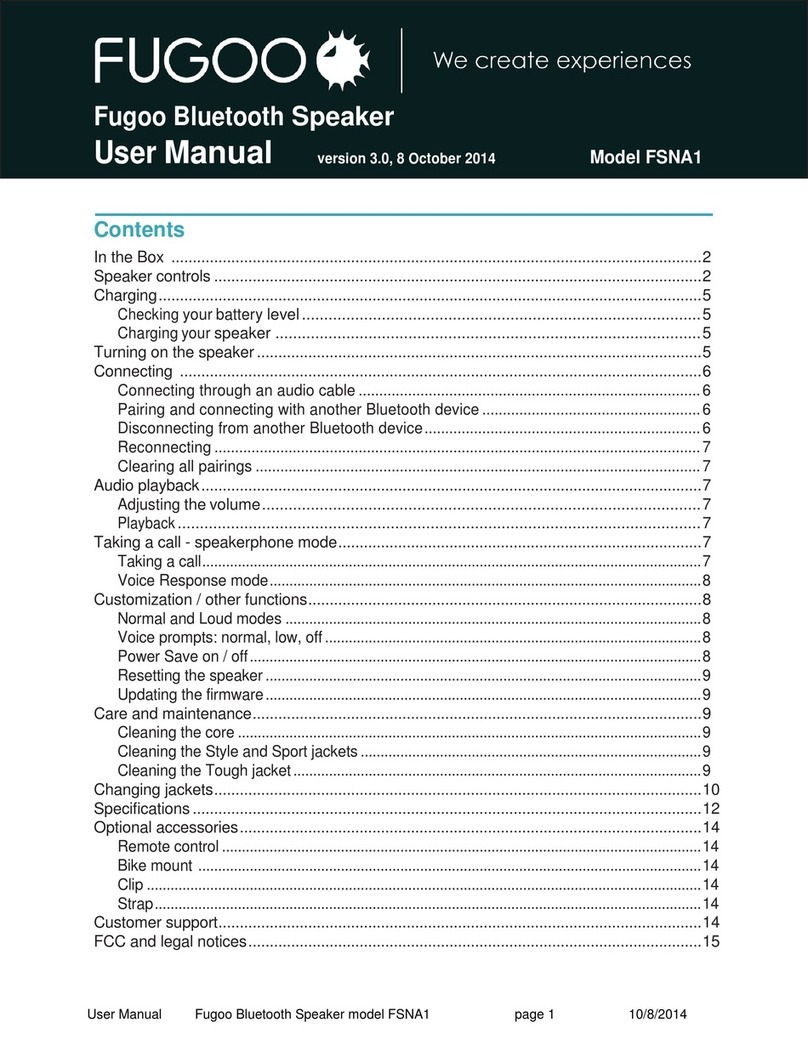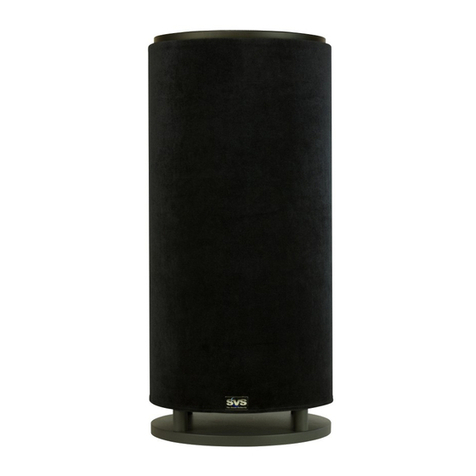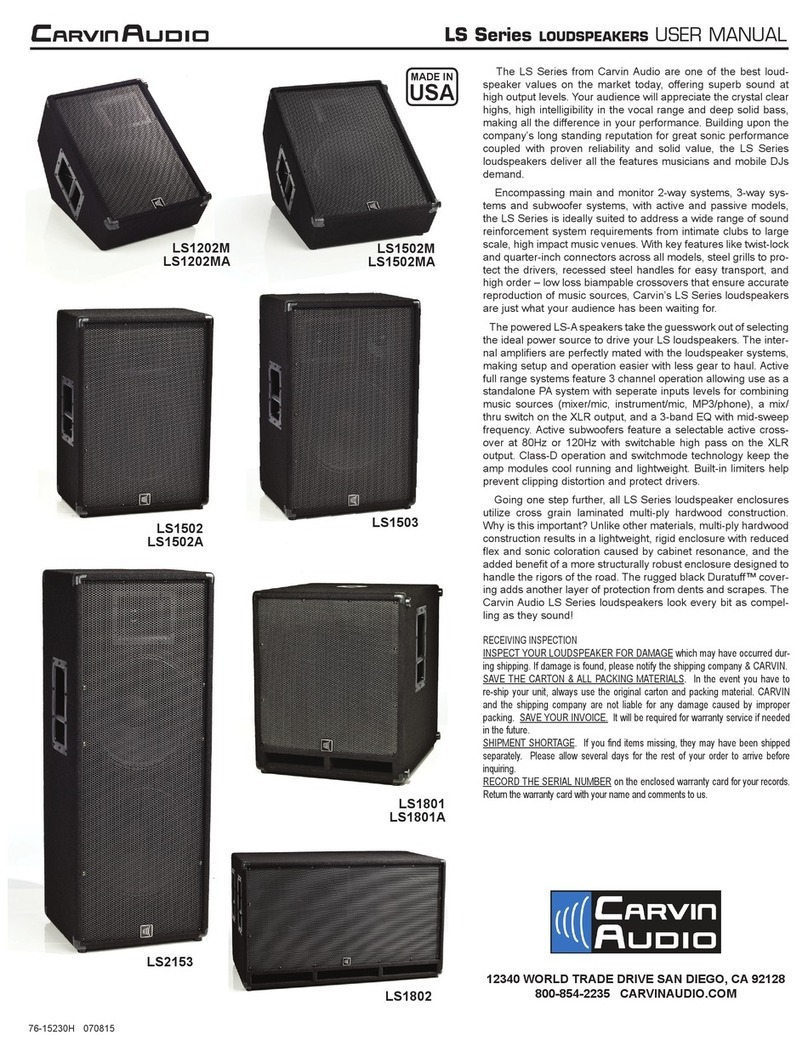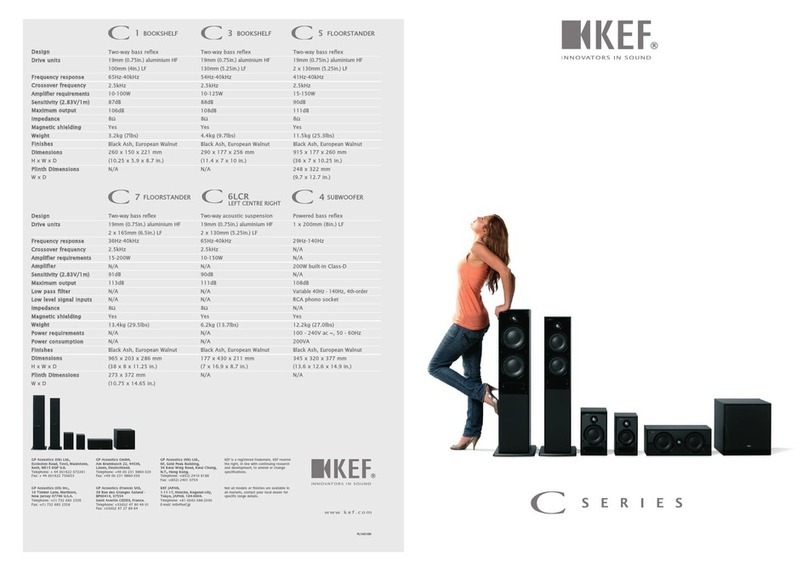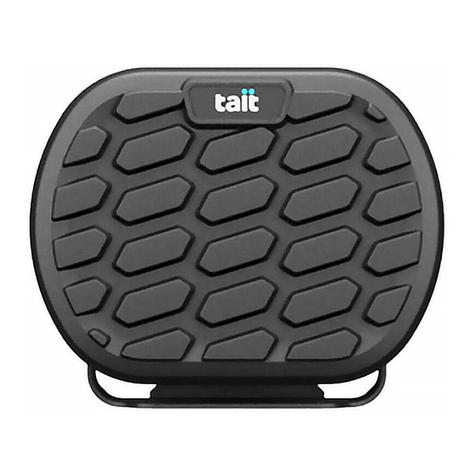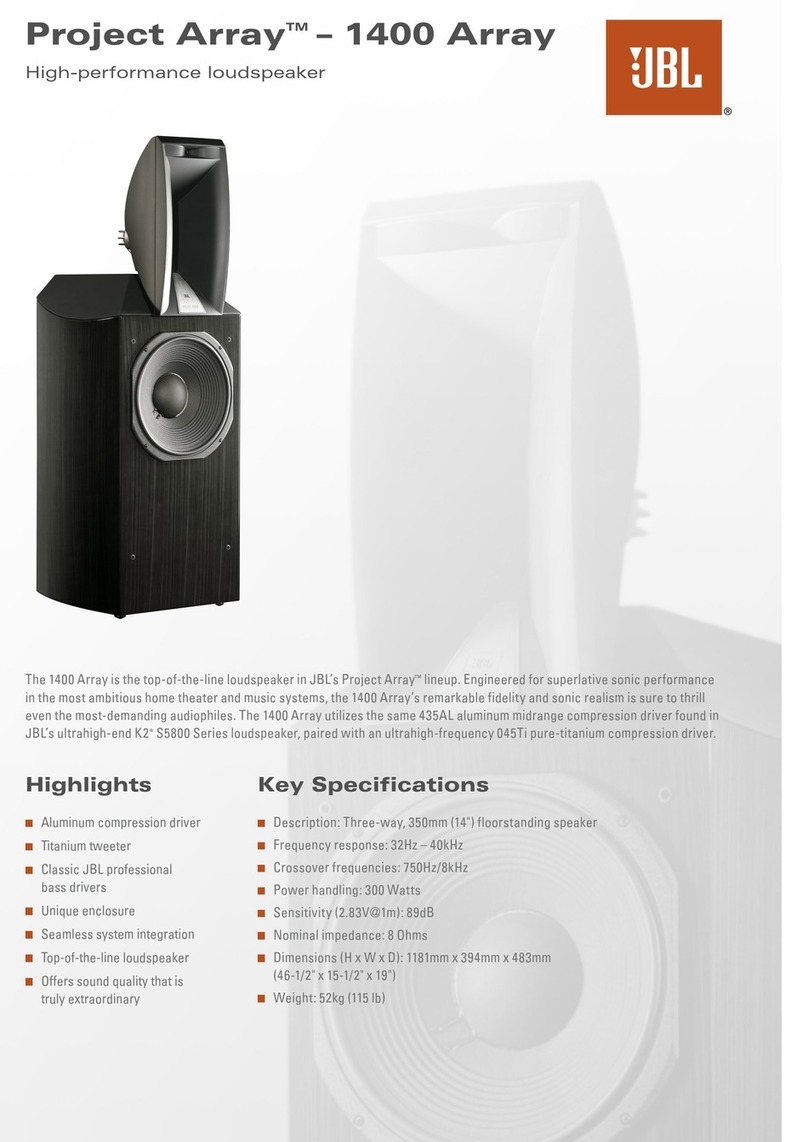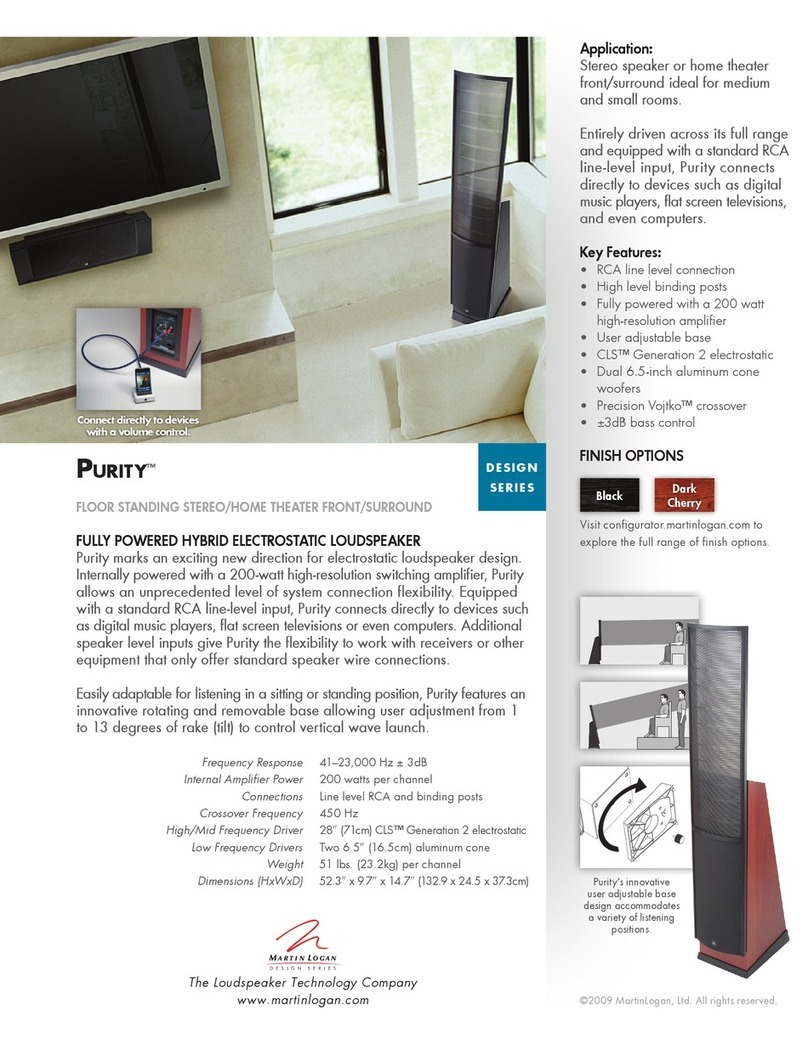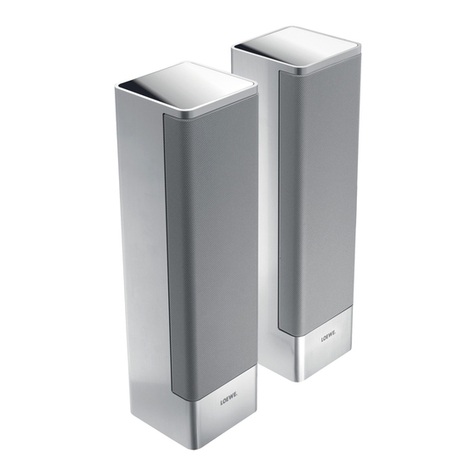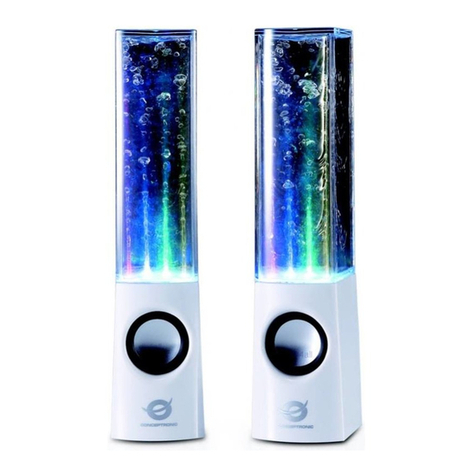
Congratulations on the purchase of your Dayton Audio®Contractor Series In-Wall Speaker System.
These speakers were manufactured with high quality components and engineered to deliver superior
sound performance. Like many of the products sold by Dayton Audio®, these in-wall speakers were
designed for ease of installation. Please read through the instructions completely before you begin
your installation.
1) PartsInventory
Your In-Wall kit should include the following:
• 1 pair of Dayton Audio®In-Wall Speakers with Grills
• 1 pair of cardboard mounting/paint masking templates
2) InstallationTools
You can install the Dayton Audio In-Wall speakers with the following tools:
• Pencil • #2 Phillips screwdriver
• Masking tape • Wire cutters & wire strippers
• Drill & drill bits • Small level**
• Utilityknife • Studnder**
• Keyhole saw*
* Recommended for use if installing in plaster walls.
** Optional tools to make the installation easier.
3) SpeakerLocation
To achieve the best performance from your Dayton Audio®speakers, it is important to carefully
select the location for installation.
Your in-wall speakers should be installed 5 to 8 feet
apart to ensure proper stereo imaging. If possible, mount
each speaker the same distance from the corners on a
common wall. Keep the speakers at least 2 feet away from
the corners of the room to avoid overemphasized bass
reproduction.
The speakers should be located so that the tweeter height
is at the same level, or slightly above the listener’s ear. You
must now decide whether the primary listening will be done
standing or in a seated position. Remember, for the best
stereo imaging, the listening position should be directly in-between the speakers with the tweeters
at ear level.
4)SpeakerInstallation
Once you have selected the location for your speakers, you are now ready to install them.
CAUTION: Be certain that there are no electrical wires, water pipes, or heating ducts in the
planned installation area before you start drilling or cutting into the wall. If there is an
electrical outlet nearby, turn off the circuit breaker to avoid possible injury.
The in-wall speakers are designed to be mounted to the wall area between the studs. Once you
have selected your location, the next step is to be sure you are between the studs. By tapping on
the wall, you will hear a hollow sound when between two studs and a sharper, more solid sound
whenrightontopof,orclosetoastud.Aneasier,moreaccuratemethodforndingthelocationof
wallstudsistouseastudnder.
Once you have established that your chosen location is between two studs and that there are no
obstructions in the wall, tape your speaker template to the wall and lightly trace around the inside
opening with a pencil. To ensure that your speaker template is straight, you may want to use a level
before you mark the wall.
Drill a 1" hole in the center of the template outline. Next, using a piece of stiff wire (a coat hanger
works well), bend it 8" from the end at a 90 degree angle. Insert the bent part of the coat hanger
into the 1" hole and rotate the wire in a complete circle to check for obstructions. If the wire hits
a stud on either side, reposition your template to the left or right and re-do the light pencil outline.
Keep the pilot hole within the template outline.
If the walls are made of drywall, simply cut the marked area with your utility knife. If your home has
plaster walls, then you will need to drill pilot holes at the four corners of the template outline, and cut
the speaker opening using a keyhole saw.
Checkthespeakeropeningbyplacingoneofthespeakersintothehole.Thespeakershouldt
loosely into the hole.
Repeat these steps for the other speaker.
5) SpeakerCable
Don’t compromise sound quality by using thin, inexpensive speaker wire, we recommend using a
high quality oxygen free copper speaker cable. For runs less than 50 feet we recommend 16 gauge
cable, and for longer runs we recommend 14 gauge or larger cable. Most municipalities require the
use of CL2 rated speaker cable for installation in walls and ceilings. Leave enough speaker cable so
youcanstandcomfortablyontheoororladderwhileconnectingthespeakercabletothespeakers.
6) SpeakerConnection
Remove about 8" of the cable jacket to expose the
inner conductors. Strip 1/4" of insulation from each
conductor and connect to the speaker terminals.
When connecting the wires to the speakers, be sure to
observe proper polarity. Most CL2 rated speaker cable
will have red and black conductors so you will connect
the red wire to the red speaker terminal and the black
wire to the black speaker terminal.
7) FinalInstallation
To install the speakers into the wall, remove the
grills. This will give you access to the mounting
screws. Turn the mounting clamps so they are
positioned as in the illustration, this will allow the
speakers to clear the hole for installation. Insert
the speaker into the hole, and tighten the mounting
screws. As you turn each screw, the mounting clamps
will rotate outward to engage the wall material.
8) PaintingSpeakers
If you choose to paint the speaker grill Donottrytopaintthegrillwhileitisonthespeaker.
The grill should always be painted separately. Do not apply heavy coats of paint that might block the
perforations in the grill.
9) Troubleshooting
Should your speakers not work properly, check the following:
Nosoundfromspeakers:
• Most stereo receivers have an A/B speaker selector switch. Make certain that this switch
is in the proper position.
• Mute feature is activated.
Onespeakerisplayingwhiletheotherisnot:
• Check the balance control on the receiver. Make sure it is centered.
• Loose connection at either the receiver or the speaker. Double check connections.
• Bad speaker cable. Replace suspect speaker wire.
Receivercutsonandoff:
• This could be caused by a short circuit between the positive and negative leads. Check
the connections at the back of the receiver, and then at the speaker. Make sure that no
strands of wire from one connector are touching the other connector.
10) CaringForYourIn-WallSpeakers
The two most common ways that in-wall speakers are permanently damaged:
1) Not enough power at higher volumes.
2) Too much power at higher volumes.

